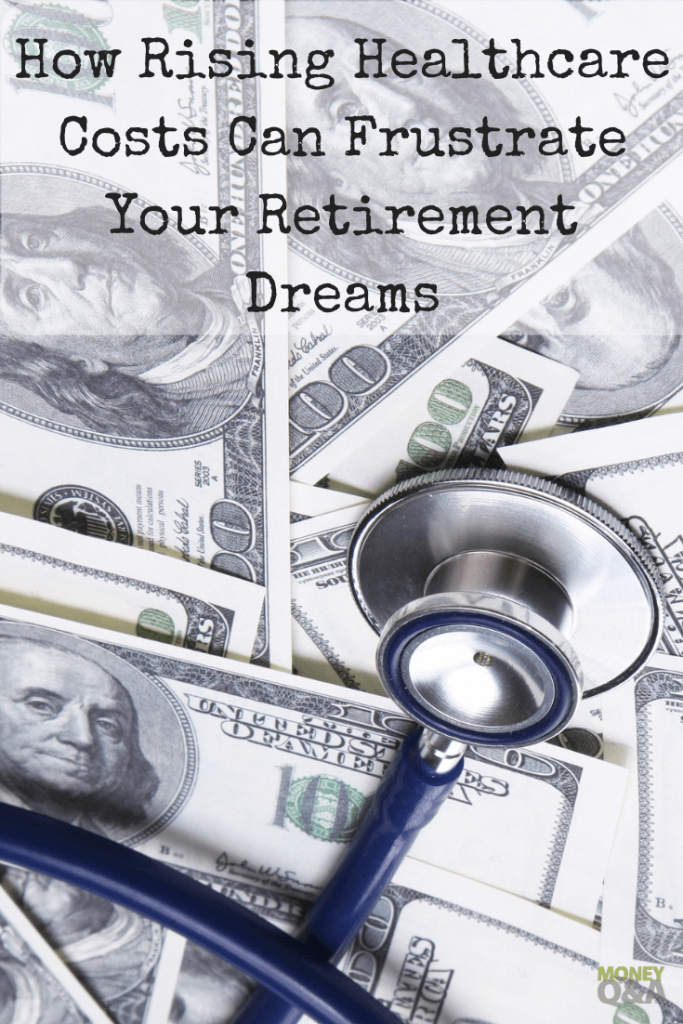Although elderly people (ages 65 and older) only account for 16% of the current U.S. population, data from the Kaiser Family Foundation found this age group accounts for 36% of all healthcare spending in the U.S. each year. When you factor in people 55+ years old, this demographic comprises just 29% of the U.S. population but accounts for 56% of all healthcare spending.
The fact that older people have more expensive, more frequent healthcare needs than younger people is no surprise, but it’s alarming to see just how much money quality geriatric care requires, especially in a time when healthcare costs are rising much more quickly than wage growth and cost-of-living adjustments (COLA) for social programs like Social Security.
The issue of rising healthcare costs could affect your retirement dreams in three major ways: (1) preventing you from saving as much as you possibly can right now, during your prime working years; (2) forcing you to make a ‘hardship withdrawal’ from your 401K or other retirement account to cover medical debts; or (3) increasing the amount you need to have in your nest egg to not just comfortably retire and cover your everyday expenses but also cushion you against a possible medical emergency that wouldn’t be entirely covered by Medicare.
To avoid letting rising healthcare costs dim your retirement hopes and dreams, here’s what you need to know and do to prepare for medical expenses now and in the future.
Average Costs of Healthcare
First things first: just how much are healthcare costs rising? Some estimates say healthcare inflation will reach 6% in 2020, while deductibles for employer-sponsored healthcare plans more than tripled between 2008 and 2018.
Meanwhile, quantitative research from the National Conference of State Legislatures found the average annual premium for employer-provided family coverage rose 5% in 2018 (average cost of $19,616 with workers contributing an average of 29% to the cost of coverage) and employer-provided individual premiums rose about 3% to nearly $6,900 (with workers contributing an average of 18% to the cost of coverage).
The fundamental issue isn’t that healthcare costs are rising; it’s that they’re rising much more quickly than other economic factors like inflation (up 1.9% in 2018) and wage growth (2.9% in 2018; wage growth has not risen above 3% since April 2009). This means that workers are expected to pay approximately 5-7% more for healthcare costs and coverage each year, while their incomes are only growing at half that rate.
Healthcare costs are also concerning for elderly populations. A study conducted by the National Bureau of Economic Research in 2015 found the government only covers about 65% of elderly individuals’ medical expenses and those medical expenses more than double between the ages of 70 and 90. Even if you’re young, healthy and insured by an excellent health insurance plan through your current employer, you’ll need to adjust your retirement savings strategy to ensure you’re financially covered against these rising healthcare costs in the future.
Why Are Healthcare Costs Rising?
There are plenty of reasons and explanations for why healthcare costs are going up (some more valid than others). Medical research and pharmaceutical companies typically claim they need to charge higher prices on drugs and technologies to fund R&D initiatives, but the problem of skyrocketing healthcare costs goes beyond reinvestments into healthcare. The administrative costs of healthcare – not just insurance companies but hospitals and patient clinics as well – are going up at a rapid rate.
Legislation restricting the ability for patients and medical staff to negotiate prices with hospitals, insurance companies and pharmaceutical manufacturers is also a likely culprit behind high healthcare costs (remember Martin Shkreli, who raised the price of a life-saving drug 5000% overnight? The pill went from $13.50 to $750 and even though Shkreli is now in prison for unrelated offenses, the pill still costs $750 for consumers).
For comparative purposes, a report from Blue Cross Blue Shield broke down healthcare spending data from multiple organizations and found that for every dollar spent on healthcare in the U.S., $0.39 goes to hospice care, $0.22 goes to physician/clinical services, $0.21 goes to prescription medications, $0.06 goes to dental care, $0.02 goes to “other” medical expenses, and $0.10 goes to government and insurance administration costs. Once again, it’s elderly healthcare outpacing the cost of nearly every other health spending category, which everyone should keep in mind when planning for retirement since the government likely won’t be able to cover 100% of these costs for you.
How Can You Protect Your Retirement Savings?
If you’re concerned about the potential costs of medical bills you may incur during your working years – especially if you live paycheck to paycheck or have a high deductible health plan – then reinvigorating your commitment to set more money aside in an emergency savings or HSA account is critical if you want to avoid other, more drastic options for covering medical debt, such as hardship withdrawals from your retirement funds.
You should also plan to save at least an extra year or two’s salary for retirement on top of what you already planned to save before retiring. This means that a retirement goal of $1.5 million saved up should instead be $1.7 million or even $2 million to ensure you have more than enough money to cover your living expenses and prepare for any medical bills that come your way during your golden years.

